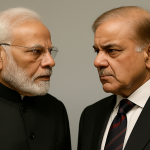
NCERT Class 7 Textbook Revamp: Mughals Removed, Magadha Empire Introduced
In a major revision of the Class 7 history curriculum, the National Council of Educational Research and Training (NCERT) has unveiled a new textbook that removes chapters dedicated to the Mughal Empire and the Delhi Sultanate. In their place, the focus has shifted to ancient Indian dynasties such as the Magadha, Mauryas, Shungas, and Sātavāhanas, reflecting an effort to root education more deeply in Indian cultural ethos.
NCERT Textbook Changes
The revised textbook, titled Exploring Society: India and Beyond, Part-1, includes 12 chapters to be taught in the first half of the academic session, with a second volume scheduled for later release. The updated content integrates Sanskrit terms such as janapada (settlement), samrāj (supreme ruler), adhirāja (overlord), and rājādhirāja (king of kings), aiming to familiarize students with indigenous concepts and linguistic heritage.
New references have been introduced to connect students to contemporary Indian cultural life, including mentions of events like the Maha Kumbh Mela, reinforcing the link between historical knowledge and present-day traditions. This transformation aligns with the objectives of the National Education Policy 2020 and the new National Curriculum Framework, both of which emphasize Indian knowledge systems and values.
Mughal History Removal
The previous curriculum contained detailed sections on the Delhi Sultanate and Mughal dynasties, including the Mamluks, Khaljis, Tughlaqs, and Lodis. In the new edition, these sections have been completely omitted, continuing a trend that began during earlier syllabus rationalization efforts.
This change represents a shift in the narrative, reducing emphasis on medieval Islamic rule in India and promoting an understanding of earlier indigenous civilizations.
Magadha Empire Inclusion
Highlighting the Magadha Empire and other ancient Indian dynasties aims to provide students with a stronger foundation in India’s early political and cultural development. By focusing on these indigenous powers, the curriculum seeks to foster a deeper sense of national identity and pride in India’s ancient history.
The new textbook aims to introduce students to historical events and figures rooted in the Indian ethos while maintaining a global perspective in an age-appropriate manner. Officials believe that this approach will enrich students’ understanding of India’s civilizational journey.
The changes have sparked a wide range of reactions from educators and historians, with some praising the increased focus on indigenous history, while others express concern over the exclusion of critical medieval periods. As schools implement the new curriculum, its impact on students’ historical perspective will become more evident in the coming academic cycles.


















